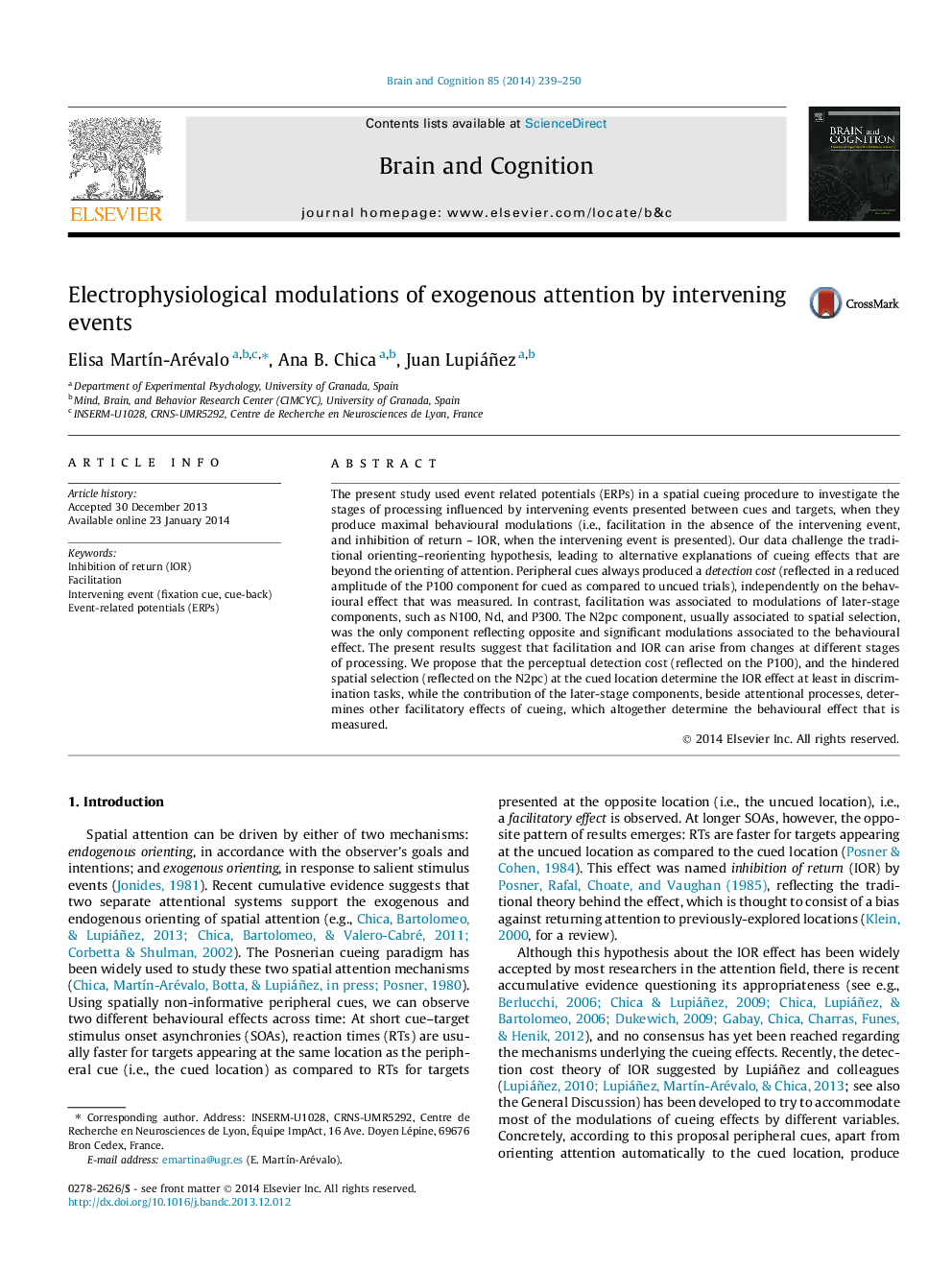| Article ID | Journal | Published Year | Pages | File Type |
|---|---|---|---|---|
| 924306 | Brain and Cognition | 2014 | 12 Pages |
•Electrophysiological evidence for differential contributions of ERP components to cuing effects (i.e., facilitation and IOR).•Peripheral cues always produce a detection cost (reflected in the P100 component) independently of the behavioural effect.•Behavioural effect is related to the modulation on later-stage components and to the changes in attentional selection processes.•Our data challenge the reorienting hypothesis for cueing effects.
The present study used event related potentials (ERPs) in a spatial cueing procedure to investigate the stages of processing influenced by intervening events presented between cues and targets, when they produce maximal behavioural modulations (i.e., facilitation in the absence of the intervening event, and inhibition of return – IOR, when the intervening event is presented). Our data challenge the traditional orienting–reorienting hypothesis, leading to alternative explanations of cueing effects that are beyond the orienting of attention. Peripheral cues always produced a detection cost (reflected in a reduced amplitude of the P100 component for cued as compared to uncued trials), independently on the behavioural effect that was measured. In contrast, facilitation was associated to modulations of later-stage components, such as N100, Nd, and P300. The N2pc component, usually associated to spatial selection, was the only component reflecting opposite and significant modulations associated to the behavioural effect. The present results suggest that facilitation and IOR can arise from changes at different stages of processing. We propose that the perceptual detection cost (reflected on the P100), and the hindered spatial selection (reflected on the N2pc) at the cued location determine the IOR effect at least in discrimination tasks, while the contribution of the later-stage components, beside attentional processes, determines other facilitatory effects of cueing, which altogether determine the behavioural effect that is measured.
